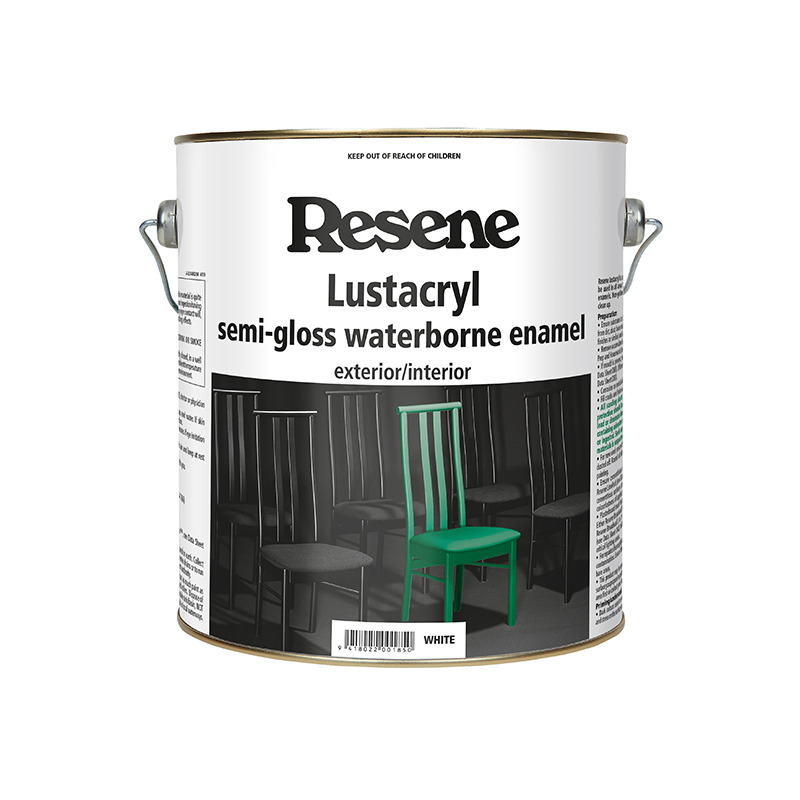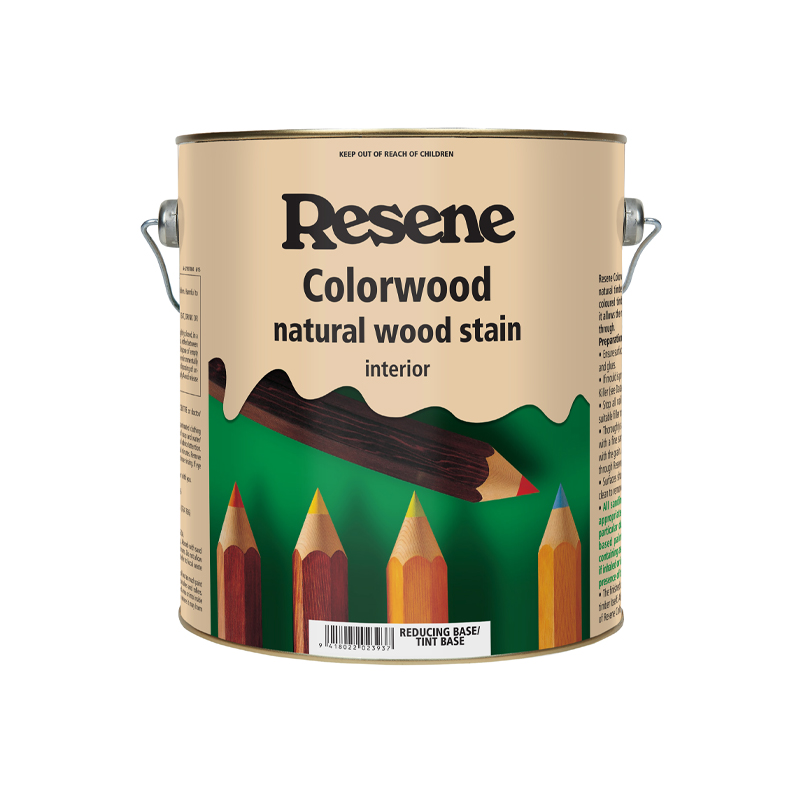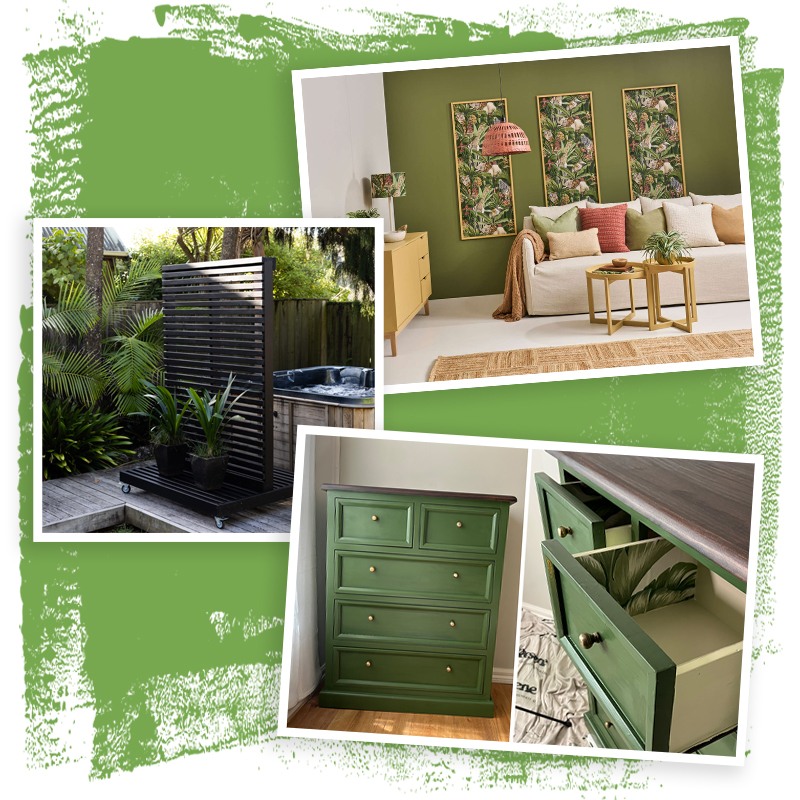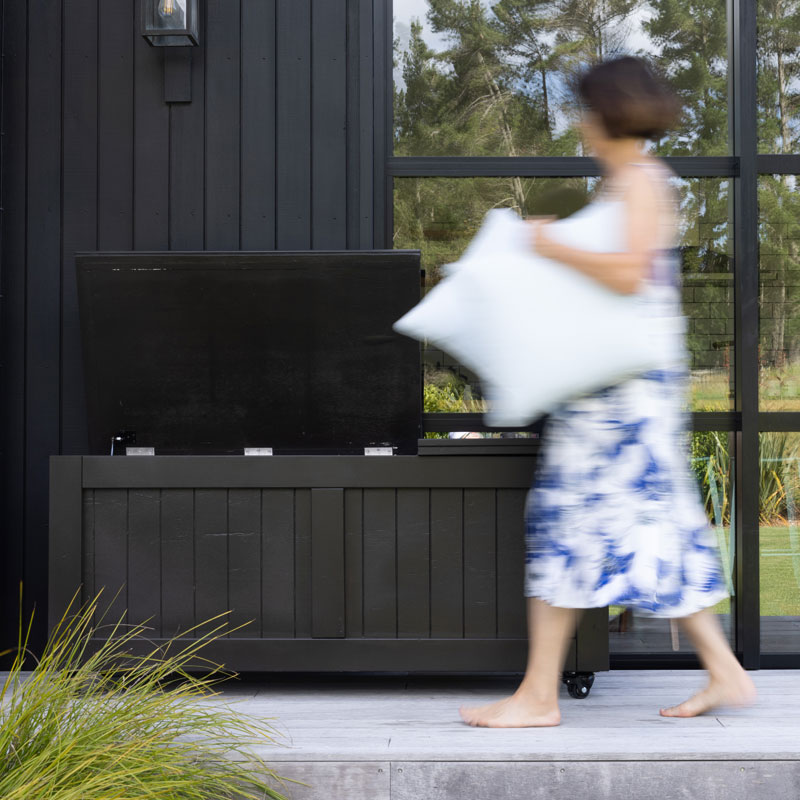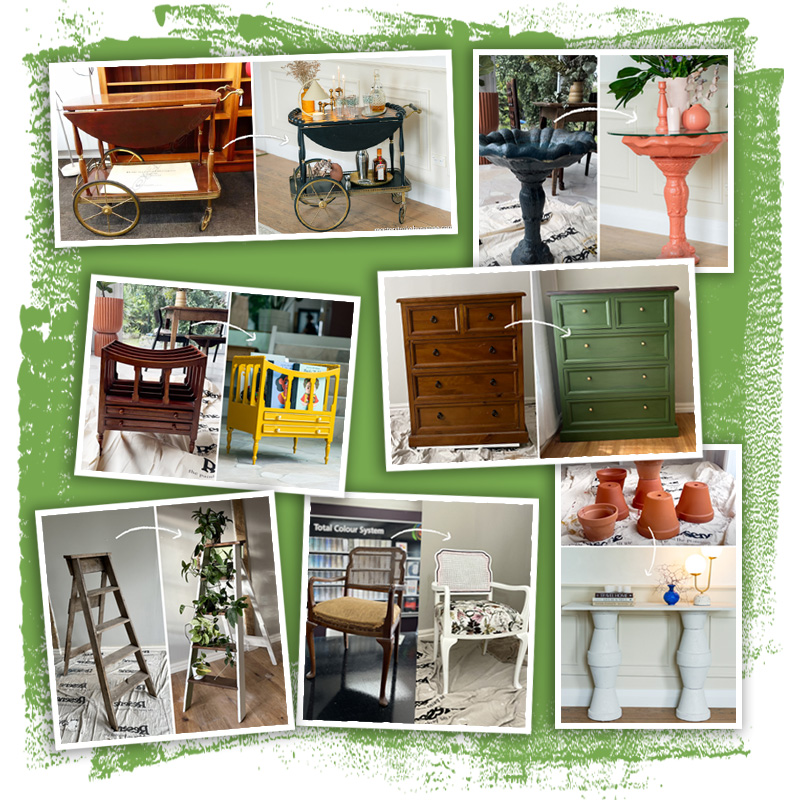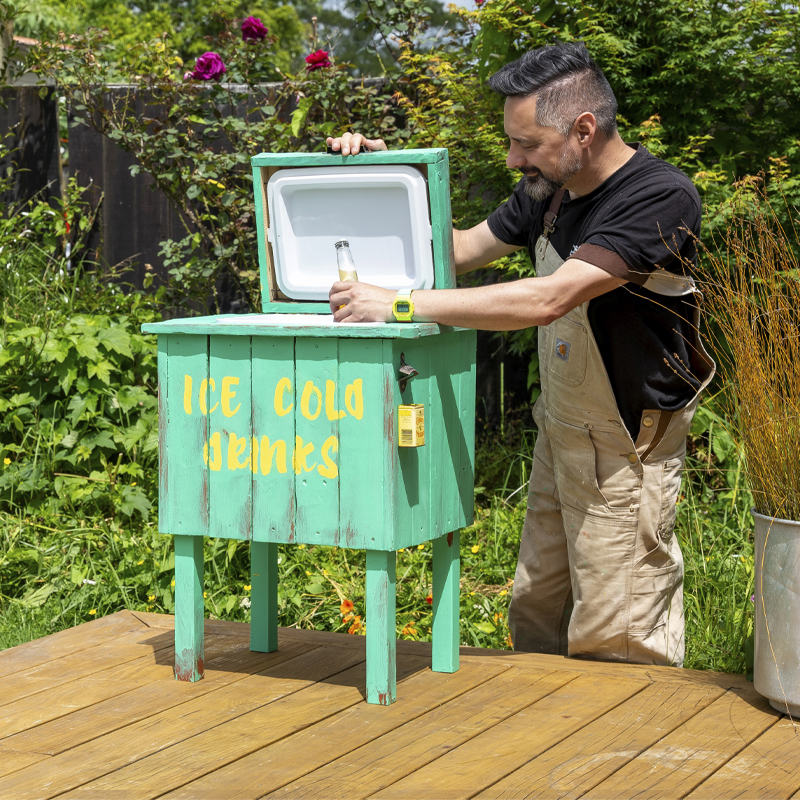There’s nothing much more satisfying than harnessing your inner creativity and DIY prowess by breathing new life into an old piece of furniture. Keen thrift flipper Thomas Swain immediately saw the potential in this old timber painter’s ladder that his neighbour no longer needed. He was able to look past the wear and tear and old paint splatters and see that the A-frame’s sturdy wooden steps would make the perfect display shelf for his houseplants. The refreshed and reinvigorated ladder could also make a perfect place to show off photo frames and ornaments.
While Thomas had a fairly clear vision of the end result he wanted to achieve, he headed into his local Resene ColorShop where the team guided him through the exact products that would work best for this particular project. Together they decided on a combination of paint and stain – that way Thomas could include some stylish colour, while also allowing the natural beauty of the timber to shine through.
This is a relatively straightforward DIY project that you can complete over a weekend. Once you’ve gathered all your Resene products and a few tools, you’re ready to get started!










